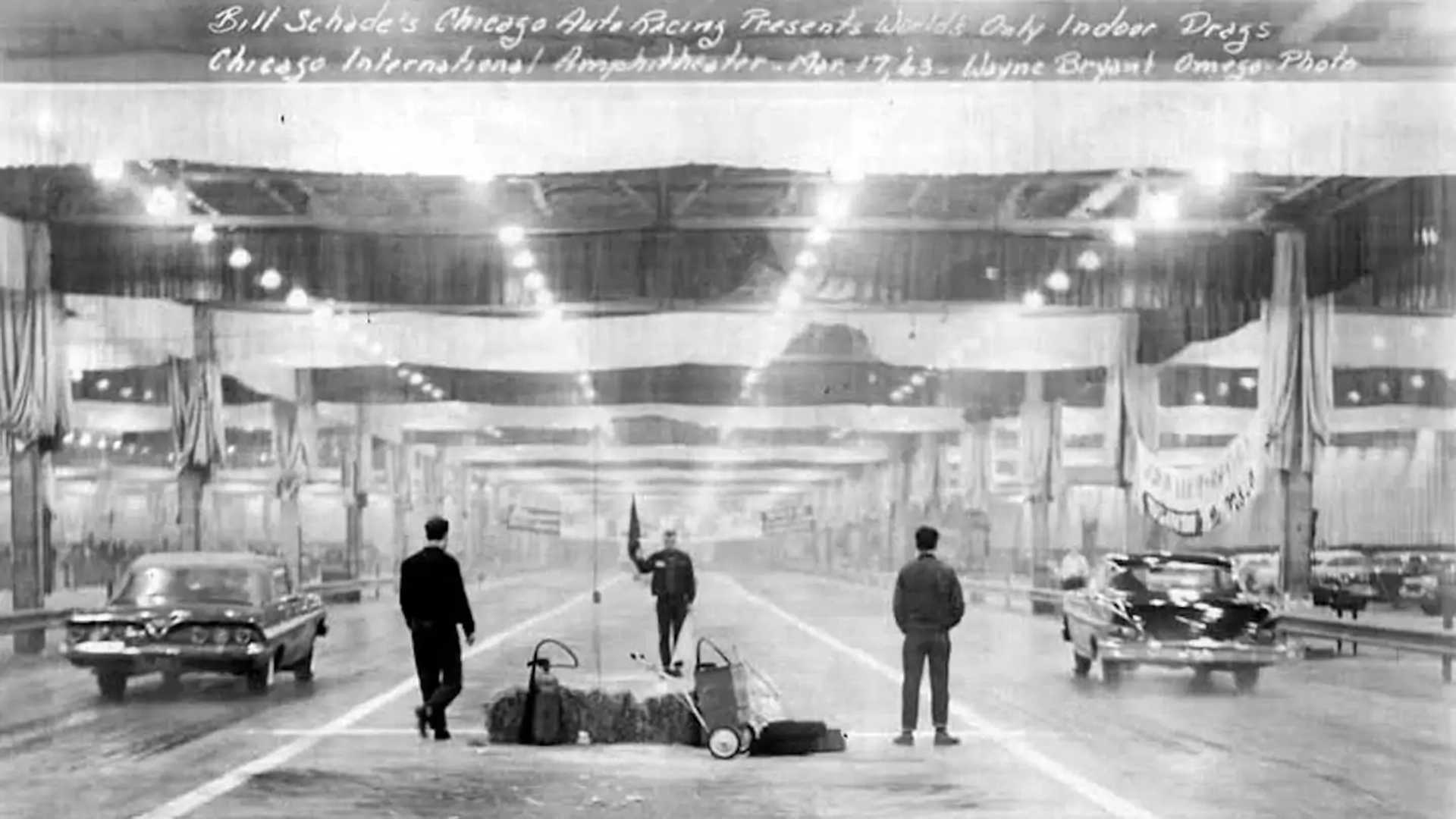Imagine the smells of burnt rubber and smoke lingering in the enclosed space.
Drag racing has become a staple of motorsport in the U.S. Drag racing is a popular motorsport activity in America. Some muscle cars, such as the Ford Mustang GT, have Drag Strip Mode to make them more competitive in this race type. Drag racing has a long history. The first drag cars were used back in the early days of automobiles. Because humans are wired to love racing, it’s only natural.
The 1960s saw electronic timing and speed sensing systems being used to record race results. What else was popularized in that decade? Indoor drag races.
According to some sources, the International Amphitheatre was located in Chicago, Illinois. It was home to petrol-heads from that era. They orchestrated straight-line races among hundreds of people. It was constructed in 1934, but it was destroyed in 1999.

In reality, the amphitheater was intended to host other events than indoor racing. Although concerts, circuses and exhibitions are all common, Bill Schade, a racing promoter, created indoor drag racing. Imagine the smoke, rubber and echoes that filled the auditorium.
Schade was a member of the United States Auto Club (USAC), which helped to make the indoor drag racing possible. The indoor drag races were created to protect the racers from the cold months of Chicago’s winter. It was first held on December 30, 1962. The track was short, however, because the concrete 440 feet in the auditorium served as tarmac to the gasoline-burning motor cars. The lanes were 60 feet wide and protected by steel rails.
The first race was a huge success and gave birth to the second race on January 5, 1964. This would be the final indoor drag race at International Amphitheatre. There was no explanation.